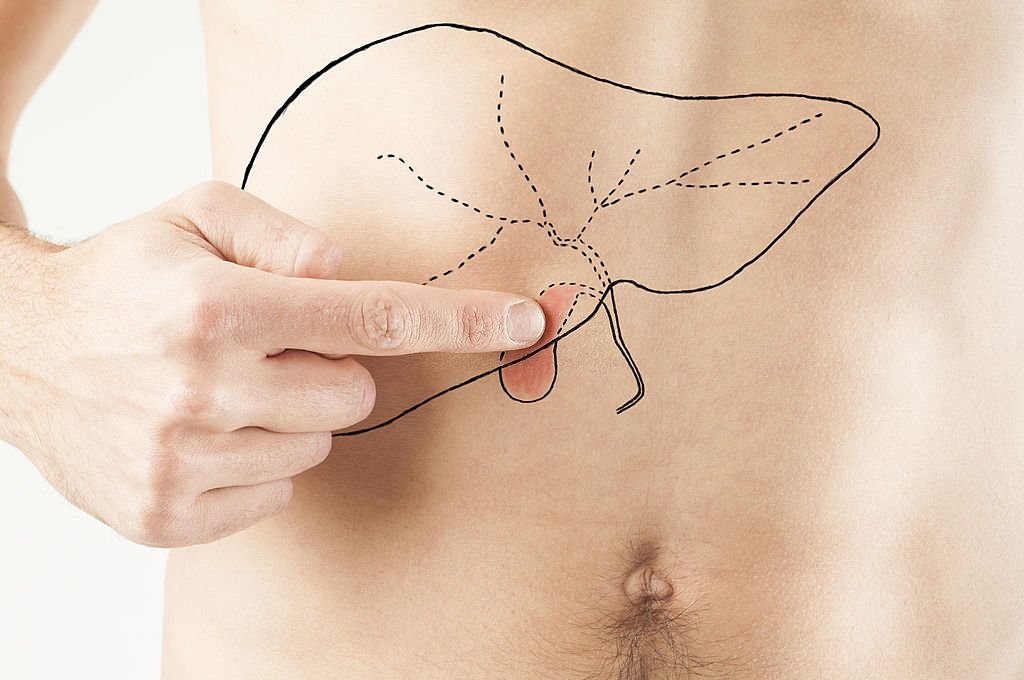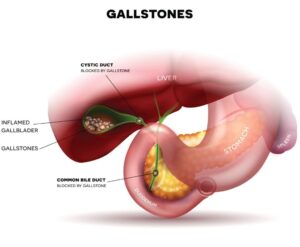The gallbladder is a very small organ of the size of a small pear that may cause several issues when diseased. Its bitter content that is released in the bowel helps to absorb fats.
The gallbladder may become site of infection or formation of stones, causing mild to severe pain and other specific or general symptoms.
In response to many of the questions we have received, Dr. Antonio Privitera will talk about the gallbladder and its diseases.
We will answer how problems in the gallbladder occur, questions about gallbladder-related surgeries and treatment methods.
Gallbladder Function
The gallbladder is a small sac located just under the liver. The gallbladder stores a juice called “bile” that is produced by the liver.
This juice is responsible for breaking down fats and aiding proper digestion.
Before a meal, the gallbladder may be full of bile and the size of a small pear. But after meals, the gallbladder is empty and flat, like a deflated balloon.
The gallbladder contracts especially after a fatty meal, and pushes its bile content through its duct (cystic duct) into the main bile duct that opens into the duodenum.
In fact, the function of the gallbladder is very important for the absorption of fats, but it is a complementary function, as there are other processes that can also
help absorption of fats without the gallbladder input. Therefore, if the gallbladder is diseased and the surgeon has to remove it, this will not much affect digestion of fats.
Gallbladder Diseases
Many diseases may affect the gallbladder, and the causes may be known to some and unknown to others. We will go into detail.
Gallstones Symptoms
For reasons that are not completely clear, substances in the bile inside the gallbladder may crystallize, forming what are called “Gallstones“. Gallstones are common, but most of the times they do not cause any issues, and they are incidental findings during ultrasound scan done for other reasons. Sometimes, they cause symptoms: pain (especially after a fatty meal), nausea, vomiting, fever in case of inflammation, obstruction of the main bile duct or pancreatitis if a stone blocks the pancreatic duct.
- Abdominal Pain is usually in the right upper part of the abdomen and it is in the form of intermittent crampy pain in the absence of inflammation.
- Diarrhea may be common in cases of gallbladder disease. This is usually after meals and can be associated with bloating and excessive production of gas (flatulence).
- Nausea and vomiting. These may be present in chronic disease, usually accompanied by acid reflux. Also, they are very common in acute inflammation of the gallbladder (cholecystitis).
- This is a sign of cholecystitis.
- Yellow eyes and body (jaundice). The skin, eyes and mucous membranes become yellow-orange colour due to accumulation of bilirubin in the blood.
- Dark urine. The urine of a patient with the gallbladder disease may become dark because of increased kidney excretion of bilirubin, usually the result of blockage of the main duct by a gallstone or a mass.

Cholecystitis
Inflammation of the gallbladder is often caused by the presence of gallstones. Cholecystitis causes severe pain and fever. It may require surgery when the infection persists or recurs or in case of failure of treatment with antibiotics. However, there is a trend to surgically remove the inflamed gallbladder in the first 72 hours of the acute episode.
Gallbladder cancer
Although rare, cancer can form in the gallbladder. It is difficult to diagnose and is usually found in later stages when symptoms appear. Symptoms may closely resemble those of gallstones.
Biliary Pancreatitis
It occurs when gallstones block the ducts that lead to the pancreas. Pancreatitis is a serious condition, and should be treated quickly by a highly experienced surgical specialist.
Symptoms Of Impending Gallbladder Perforation
Gallbladder rupture occurs when the wall of the gallbladder perforates, which may occur as a result of neglecting to treat the early symptoms of cholecystitis.
Symptoms of perforated gallbladder include:
- Pain in the upper right side of the abdomen becomes more generalised as the gallbladder bile content spills in the abdomen.
- High Fever and increasing signs of inflammation and infection in the blood
- Sepsis. This happens when infection spreads in the blood and affects other organs and systems. The heart rate increases and the blood pressure falls and the mortality is high.
Gallbladder Treatment
In case of symptomatic gallstones or other disease affecting the gallbladder, surgery to remove your gallbladder may be indicated. It is not possible to remove the stones without the gallbladder. In fact, the gallbladder is the factory of stones and if not removed, other stones will form.
How do you prepare for the operation to gallbladder removal?
Your doctor will give you instructions about preparations for gallbladder surgery. These include:
- Food is generally allowed up to 8 hours before the surgery and clear fluid up to four hours.
- Some medicines may be taken with a sip of water on the day of the operation.
- A person must accompany you on the day of the operation, and take you home.
Laparoscopic Gallbladder Surgery
The surgeon makes a few small incisions on the right side of the abdomen. The surgeon uses one of the incisions to insert the laparoscope. This is a thin metal tube with a camera at the end. Other instruments are inserted through other small cuts. The surgeon identifies the gallbladder duct, and this is ligated and divided. Then, the gallbladder is separated from the liver bed, and will be removed out of the body. The team will then close the incisions with stitches or clips or surgical glue.
Laparoscopic cholecystectomy is less invasive than open cholecystectomy. Laparoscopic cholecystectomy takes about an hour. The use of laparoscopy to remove the gallbladder (key-hole surgery) has many advantages compared to traditional open surgery. These include:
- Less pain.
- Faster recovery and quick return to normal activities.
- Smaller cuts and scars.
What happens after gallbladder removal?
Your medical team will monitor you for a few hours after surgery. They want to make sure you wake up from the anesthesia without complications.
They will check your heart, breathing, blood pressure, and ability to urinate. Usually you can go home the same day or the day after.
What should I do to take care of myself after gallbladder removal?
After surgery, do the following to help yourself recover:
- Avoid lifting heavy objects.
- Drink a lot of water.
- Eat foods rich in fibres to help with bowel movements.
- Follow your doctor’s instructions about caring for your wounds and taking medications.
- Walk a little every day to prevent blood clots.

Laparoscopic Gallbladder Removal in Dubai
Dr. Antonio Privitera, a world-class surgeon, and a well-known speaker at scientific conferences, works in Dubai London Hospital in the UAE.
Dr. Antonio is one of the most famous specialists in advanced and modern laparoscopic surgeries, including gallbladder operations. You can contact Dr. Antonio team to book an appointment, discuss your case, and determine the best treatment available in Dubai.
